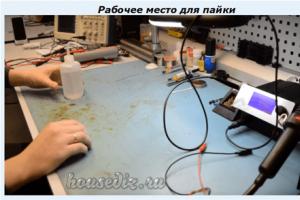Hello! At work, I accidentally scratched my hand on the staircase railing on something sharp. The blood did not come out immediately and not a lot. Arriving home half an hour later, I treated the scratch with iodine. Tell me, is there a risk of contracting any infection this way? Maybe someone before me was scratched in the same way and there was blood left there (I also remember scratches about razors left in public places, etc.). Sorry if this is a stupid question, but I'm pregnant and I'm really worried.
Ekaterina, MOSCOW
Hello! The risk is mainly related to hepatitis B. If you are not vaccinated, check your vaccination status and get tested. With uv. ,Alexandrov P.A.
Clarification questionRelated questions:
| date | Question | Status |
|---|---|---|
| 13.03.2017 |
Hello! Please tell me if there is a risk for HIV. A child on the street knelt on broken glass (she was trying to climb a tree, and there was glass in a niche). She was wearing jeans and tights. At home I found two wounds and scratches on my knees. There seemed to be no visible blood on the glass. But it was difficult to see that they were also in the ground. If someone with HIV infection gets injured on these glasses. Many children are trying to climb this tree. But about 10 minutes before us there was no one. There may be a risk in such a situation... |
|
| 27.10.2013 |
Good night Pavel Andreevich! Please tell me in a year my Ifa will be negative after (unprotected sexual intercourse with a girl HIV 1 or HIV 2 I still don’t understand! I found out from a friend after the symptoms! The symptoms are just like in the book! Tests for HIV Ifa 7 week 2 4 5 6 7 8 9 10 11 month negative 3 month PCR RNA (hemotest) 200 copies - HIV not detected 4 month molecular diagnostics center PCR RNA HIV 1. 2 20 copies - PCR HIV not detected 6 month PCR RNA HIV 1. 2 20 copies not detected.. . |
|
| 19.01.2018 |
Hello. Such a story. There was a case in my childhood when a dog attacked and I was injected with vaccinations, I don’t remember 40 or not, since I was a little girl. I remember that I was very scared then. Then my parents and I moved to Europe, and there are no stray dogs or rabies there. But then we returned back for a while. And it so happened that yesterday I was walking and saw a dog. She literally did her “big things.” But then a picture from my childhood flashed up, and I quickened my pace. And for some reason I always started to freak out. I didn’t see the dog and went... |
|
| 07.11.2016 |
Hello! Please tell me whether there is a risk of contracting HIV infection in this situation: The child has a fresh scratch on his leg (apparently he scratched himself with a nail). Not bleeding, but clearly fresh. Today the child had a massage, at the end of the massage I saw that the masseuse had a deep cut on her finger. There was no blood coming from it, but it was deep. With this hand she massaged her leg with a scratch. I massaged my leg with oil for quite a long time. She washed her hands before the massage. |
|
| 29.10.2018 |
Hello, doctor, please help me, should I be afraid or worry? My husband celebrated Driver's Day at work yesterday, and someone was fighting with someone there. My husband and someone else took them away there. And I came home with blood on my pants and jacket. And he didn’t bathe, it was late, he went to bed. My little daughter, 1.3 years old, got up in the morning and went straight to him. At first I wasn’t worried, but then I saw blood on things and everything went well, you can become infected with HIV and hepatitis in this situation. After all, he came home and was everywhere, walked, touched... |
 Can you get infected with HIV through a scratch? This question interests many. According to statistics, every year the number of people suffering from immunodeficiency increases, and the number of those who have recovered is zero, because a cure has not yet been found. Therefore, people increasingly have questions about ways of contracting HIV in everyday situations.
Can you get infected with HIV through a scratch? This question interests many. According to statistics, every year the number of people suffering from immunodeficiency increases, and the number of those who have recovered is zero, because a cure has not yet been found. Therefore, people increasingly have questions about ways of contracting HIV in everyday situations.
The immunodeficiency virus is an incurable infection transmitted through blood, sexual contact, and breast milk. This virus is not transmitted through normal communication or touching, since the pathogen is not able to survive outside the human body.
But is it possible to become infected with HIV through a simple scratch on the skin? This question is very relevant these days, but it is impossible to give a definite answer, since the outcome of such an event cannot be predicted. Of course, if a certain amount of infected biological fluid enters the blood of a healthy person, then the chance of transmitting AIDS through a scratch is approximately 80%. However, such an outcome requires a fairly large amount of blood, and if you simply treat the wound of a person with HIV or scratch him, then the probability is almost zero.
 Also, if the place where the scratches have healed and there is no blood on them is touched by a bleeding wound of a healthy person, then the likelihood of transmitting immunodeficiency is negligible. The possibility of infection arises if you cut yourself with an object that contains the blood of an HIV-positive person, but this also has its own aspects: in order to become infected in this way, the time the biological fluid is on the object should not exceed 5 minutes. After this period, the virus dies in the open air, and therefore it becomes impossible to introduce the retrovirus into a healthy body.
Also, if the place where the scratches have healed and there is no blood on them is touched by a bleeding wound of a healthy person, then the likelihood of transmitting immunodeficiency is negligible. The possibility of infection arises if you cut yourself with an object that contains the blood of an HIV-positive person, but this also has its own aspects: in order to become infected in this way, the time the biological fluid is on the object should not exceed 5 minutes. After this period, the virus dies in the open air, and therefore it becomes impossible to introduce the retrovirus into a healthy body.
Another possibility of infection arises when kissing a patient who has bleeding wounds on the lips or in the mouth. If such scratches are small or do not bleed, then the likelihood of HIV transmission through such an abrasion is extremely low.
From the above, we can conclude that the chance of contracting HIV through a scratch is 1/1000. Favorable conditions must remain for the retrovirus to survive and be capable of infection, and such cases are approximately 1 in 1000. To confirm this fact, you can take as an example a regular trip to the dentist. Is a certificate stating that the person is HIV negative required before each appointment? No. And wounds are inevitable during dental treatment. However, you should not rely on statistics and listen to statements that in practice there is not a single case of HIV infection through scratches.
 There is always a chance of becoming infected, no one is immune from this, so you should not neglect the advice and instructions of doctors on preventing the disease. It is not for nothing that foreigners are so worried if they receive, as it seems to the citizens of our country, a small abrasion or scratch and immediately run to treat it or go to a medical institution. This “excessive” concern is completely justified and correct. If there is bleeding, even after a slight prick on something, you should apply a little pressure to the affected area so that the dirt that has accumulated in a matter of seconds comes out and quickly treat everything. This is the only way to protect yourself and your loved ones from such a dangerous and, most importantly, incurable disease.
There is always a chance of becoming infected, no one is immune from this, so you should not neglect the advice and instructions of doctors on preventing the disease. It is not for nothing that foreigners are so worried if they receive, as it seems to the citizens of our country, a small abrasion or scratch and immediately run to treat it or go to a medical institution. This “excessive” concern is completely justified and correct. If there is bleeding, even after a slight prick on something, you should apply a little pressure to the affected area so that the dirt that has accumulated in a matter of seconds comes out and quickly treat everything. This is the only way to protect yourself and your loved ones from such a dangerous and, most importantly, incurable disease.
This myth is part of a theory about HIV transmission that has no real-world evidence. There have been no documented cases of HIV transmission through an open wound (except when the wound is caused by the infected person himself, for example through a contaminated syringe). Infection is only possible if an uninfected person has come into contact with a large, fresh, bleeding wound (minor cuts and scratches usually begin to heal within an hour after the injury).
Myth 13: A child born to an HIV-positive mother will also be HIV-positive.
HIV-infected mothers can pass the virus to their baby during pregnancy, childbirth, or breastfeeding. However, pregnant HIV-positive women usually do everything to reduce the risk of infection of the fetus: they begin treatment early in pregnancy and avoid breastfeeding, which minimizes the risk of infection.
Can you get HIV if you get bitten in a fight?
Hand contact with the genitals, even if there is discharge, and if saliva is used as a lubricant, HIV will not be transmitted. The same applies to hand contact with the vagina or anus, even if there are scratches or cuts on the hands. There are no cases of HIV infection in this way.
Is it possible to cure syphilis with one injection?
The human immunodeficiency virus is considered one of the most dangerous diseases. Most often, infection occurs through sexual contact. In everyday life, you can become infected with HIV through a wound. What is the probability of HIV entering the human body through a wound?
The risk of contracting immunodeficiency increases if:
- reuse an infected medical needle;
- share personal hygiene products (razors, scissors or manicure sets);
- make tattoos and use unsterile instruments;
- during blood transfusion.
Infection occurs when an infected biological fluid enters the body of a healthy person, where the retrovirus begins to multiply and cause disease. Therefore, in everyday life, the likelihood of contracting HIV through a wound is quite possible when using cutting objects that have infected blood on them.
But at the same time, a person must also have an open wound surface through which the pathogen will penetrate. In this case, HIV blood gets into the wound or scratch. Most often this happens due to negligence or during a fight. What is the likelihood and is it possible to become infected with HIV during a fight? This question is very relevant.
Unfortunately, in medical practice, cases of infection are recorded during fights with HIV-infected people. Naturally, people in such aggressive behavior rarely control their actions. In fist fights, the wound surfaces of an infected person may come into contact with the damaged skin of a healthy person.
In this case, you can become infected with HIV wound to wound. The percentage of such cases of HIV infection is low. But if sharp or piercing objects were used during a fight, the risk of infection increases significantly. Through deep or superficial wounds, the virus easily enters the bloodstream of a healthy person, along with the blood of a patient with HIV infection.
First aid
When providing first aid to victims after a fight with a patient with immunodeficiency, you first need to:
- wash off blood that gets on the skin (preferably with soap);
- in case of contact with eyes, they are also washed with water;
- then it is necessary to treat the wound surfaces with any disinfectants at hand (vodka, alcohol, alcohol tinctures);
- deep wounds should be treated with hydrogen peroxide, bandaged with a bandage and the victim transported to the nearest hospital. Sutures may be required;
- When performing artificial respiration, you need to use a scarf.
To “dispel” all doubts about infection with AIDS or HIV through a wound, you need to undergo research in a specialized clinic. In everyday life, it is easier to protect yourself from possible HIV infection through a wound surface. If it is known that close people are infected, then after possible cuts, you should immediately carefully wash the object on which the integrity of the skin was broken under running water and treat the wound to the victim. However, you should avoid direct contact with an open wound if there are small cracks in the skin, hangnails or cuts.
The appearance of primary hard chancre on the skin during syphilis, a description of the complication
In general, infection with AIDS during a fight is quite possible, although it is rarely recorded. To exclude infection or alleviate the clinical picture of the disease, you need to immediately do screening tests for the presence of infection. Today, this disease is still incurable and the patient’s life is supported by taking antiviral drugs.
HIV-infected children are isolated unnecessarily
44% of HIV-infected Russians are women. Over the past 25 years, they have given birth to more than 33 thousand HIV-infected children in Russia. In recent years, infected women give birth to 7-8 thousand babies a year. According to Rospotrebnadzor, today 3.96 thousand children are infected, of which 1.5 thousand received the infection during their mothers’ pregnancy.
If for some reason (most often due to drug addiction) a woman is not examined, a short-term course of specialized therapy should be carried out to prevent the “vertical” transmission of HIV infection (transmission during childbirth).
Without treatment, the risk of infection of the child from the mother is 20-45%, and if the mother undergoes chemotherapy during pregnancy - 1%. Moreover, if carried out.
The number of HIV-infected people is constantly growing, and a vaccine against this virus has not yet been created. There is also no drug that can cure this disease.
Modern medications can only significantly delay the onset of AIDS and make the infected person non-infectious (see symptoms of HIV infection). Therefore, until now the only way to escape HIV is prevention.
The fact that HIV is transmitted sexually and through blood is probably known to everyone, from a first-grader to a pensioner, but people still have a lot of questions about this. Let's try to answer some of them.
Routes of HIV infection Sexual route - everything is clear here, the virus is transmitted through unprotected sexual intercourse, and the likelihood of contracting HIV through anal intercourse is much higher than through traditional (regardless of orientation). Parenteral - through blood during transfusion, as well as when using non-disinfected medical instruments, such as syringes. Vertical - from the mother.
If the integrity of the skin is not compromised, then no, HIV infection is not transmitted through saliva. All the stories about microscopic wounds are very unlikely. Because the volume of saliva with blood from this wound should be global, again, it is not a fact that the opponent was infected.
Do's and Don'ts for Chlamydia
For example, there is not a single case of HIV infection in kindergarten. That is, where there is a large group of children and one infected child. They also bite, fight, and scratch.
Even sex without a condom with an HIV-infected person is not a 100% guarantee of infection.
However, this does not mean that you need to let down your guard and get into trouble.
And a young person needs to be tested for HIV infection periodically. The AIDS center will give it to you free of charge, according to your indications.
Yes, infection is quite possible. The infection can also be transmitted through blood. They hit the lip with a bloody fist and it was broken - that’s the infection! Therefore, you need to try to avoid fights with strangers and generally try not to get into conflict with people on the street.
There needs to be a whole code of conduct here. Do not drink alcohol and especially do not use drugs on the street and in unfamiliar places. Avoid casual dating. Don't walk around the city at night. Be extremely careful while driving. Always use the “let the fool through” rule. Do not argue with him if he is drawn to conflict on the road. And so on. Any conflicts with strangers can be dangerous. And this should not be forgotten.
I think preventive measures can also help. Treat the wound immediately with hydrogen peroxide or iodine. The virus is unstable and will die if everything is done quickly.
Myth 11: Drug therapy is not necessary at the onset of the disease
HIV can significantly weaken the immune system. HIV is a serious disease that can be life-threatening, so those infected should seek medical help as soon as possible. Early treatment will help limit or slow down the destruction of the immune system and delay the progression of HIV to AIDS.
Myth 9: Mosquitoes carry HIV
You cannot become infected with HIV through the bite of a mosquito or other blood-sucking insect. When an insect bites, it does not inject you with the blood of the person it previously bit.
Myth 6: You can get HIV from sitting on the toilet
Sharing the same toilet with an HIV-infected person does not pose any threat, since the virus is not transmitted through household contact. HIV is a very fragile virus; it dies quickly and cannot reproduce outside the host’s body. Thus, using a shared toilet is not dangerous for a healthy person.
Myth 8: HIV is transmitted through joint masturbation
Hand contact with the genitals, even if there is discharge, and if saliva is used as a lubricant, HIV will not be transmitted. The same applies to hand contact with the vagina or anus, even if there are scratches or cuts on the hands. There are no cases of HIV infection in this way.
Myth 10: HIV can be identified by symptoms
HIV does not always cause symptoms. Sometimes those infected develop flu-like symptoms several weeks after infection. However, most often it takes about 10 years for symptoms to appear, a time called the latent period. Due to the fact that the symptoms of HIV are hidden and coincide with the symptoms of other diseases, the only way to test yourself is to get tested.
Myth 1: HIV means the same as AIDS
The human immunodeficiency virus (HIV) attacks and destroys CD4 antigen markers on helper T cells—cells that fight infection and disease. AIDS (acquired immunodeficiency syndrome) is a late stage of the development of HIV infection, in which the human immune system is significantly weakened. Without proper treatment, most HIV cases progress to AIDS within a few years. In fact, many experts use the word “HIV” and the word “AIDS” because they are stages of the same disease, but with the availability of modern HIV treatments, it is often possible to prevent the development of AIDS.
Myth 3: HIV can be transmitted through any contact.
The human immunodeficiency virus dies very quickly outside the body. In addition, it is not found in all body fluids; for example, it is not found in tears, sweat and saliva. Thus, the virus is not transmitted through touching, hugging, kissing, shaking hands and other daily contacts. The virus is not transmitted through household contact, even if you share the same toilet, shower, or kitchen utensils.
Myth 4: Blood transfusion is the most common way to become infected with HIV
Years ago, before modern blood tests were available, HIV was sometimes transmitted through blood transfusions or organ transplants from people with HIV. However, thanks to accurate blood tests, cases of HIV infection in this way have not been recorded in developed countries for 20 years.
Myth 12: Sex between people living with HIV is safe
Choosing an HIV-infected partner for sex is not necessarily safe for the person carrying the virus. There are many strains of HIV, which increases the risk of contracting another type of virus that will not respond to treatment. In addition, unprotected sexual contact can cause infections such as chlamydia, gonorrhea, syphilis, and genital herpes.
Myth 5: You can get HIV through oral sex
Almost all cases of sexually transmitted HIV infection occur through unprotected vaginal or anal sex; infection through oral sex is extremely rare, since the virus is not transmitted through saliva. A condom provides maximum protection against infection.
Myth 7: Open wounds or contact with blood can cause HIV infection.
This myth is part of a theory about HIV transmission that has no real-world evidence. There have been no documented cases of HIV transmission through an open wound (except when the wound is caused by the infected person himself, for example through a contaminated syringe). Infection is only possible if an uninfected person has come into contact with a large, fresh, bleeding wound (minor cuts and scratches usually begin to heal within an hour after the injury). Exposure to large amounts of contaminated blood (as occurs, for example, among emergency medical personnel) can be risky without proper protection, such as disposable gloves. However, there have been no reported cases of transmission of the virus through contact with blood in the home, in a restaurant or through social contact.
Myth 2: HIV can be cured today
HIV is an incurable disease. There is currently no vaccine for HIV, but research in this area continues. Scientists have been able to create drugs that help control the virus, so its spread can be significantly slowed down. If you take your treatment seriously and follow all your doctor's instructions, you can live a long life with HIV. In countries where medicine is developed, HIV-infected people can live as long as healthy people.
You need to understand that you can become infected with HIV only through direct contact with the internal fluids of a sick person - sperm, blood, vaginal fluids, breast milk. Infection occurs only if these materials enter the bloodstream or mucous membranes of the human body. The virus is also present in urine, stool, vomit, saliva, sweat and tears, but in much smaller quantities. If blood is present in these liquids, then the risk of infection increases several times.
Penetration of the virus into a healthy body occurs when contaminated materials enter a damaged mucous membrane. It could be a cut, a wound, or just a crack. It should be remembered that HIV is not transmitted through hugs or handshakes. It is also impossible to become infected by sneezing, coughing, staying in the same room, using the same toilet lid, or using the same dishes.
In most cases, HIV-infected material enters the blood of a healthy person. This can happen in different ways. For example:
During a blood transfusion. Of course, all donated blood is tested for HIV infection. But the fact is that when studying test results, doctors pay attention to the presence of antibodies to this infection in the blood, and a sick person begins to produce them only six months after infection. This means that even if no virus is found in the blood, the material can still be infected;
HIV infection is widespread among drug addicts, as they share needles and syringes with which they inject drugs into a vein;
the virus can be transmitted from the blood of mother to child during pregnancy or directly during childbirth;
when feeding a child with breast milk from an infected woman;
during direct contact with semen or vaginal fluids. In fact, this is one of the most common ways of infection. It usually occurs without the use of condoms during sexual intercourse with a sick person. For the virus to penetrate a healthy body, a small wound or crack in the vagina, penis, rectum, and even the oral mucosa will be sufficient. A condom also cannot provide one hundred percent protection against infection, because it cannot protect all parts of the body. So, transmission through bites and kisses is also quite possible. Yes, and condoms are different. For example, a condom for married couples can protect against unwanted pregnancy, but it is practically useless against HIV. There are special condoms for oral, vaginal and anal sex that can protect against dangerous infections.
Now it’s worth considering what is the probability of infection through various routes of transmission, and what are the statistics of methods of infection.
Unprotected sexual relations: infection occurs in 1% of cases (an exception is anal sex, as the risk increases to 10%). The percentage of people infected in this way is 70 - 80%.
Donor blood transfusion: the probability that a person will get sick is 90%. Approximately 3 - 5% of people are infected in this way.
Causing wounds and scratches with contaminated scissors, razors and other tools: chance of infection is 2%. The disease is transmitted in this way in approximately 0.1% of cases.
Intrauterine infection of the fetus: the probability that the child will be born infected is 30%. The contribution to the development of the epidemic is approximately 5 - 10%.
It is quite rare that you can become infected with HIV at home, but since this possibility really exists, it is better to know about it in advance. How can HIV be transmitted in everyday life? -HIV can be transmitted through blood. Moreover, for infection it is necessary that the blood of an HIV-infected person enters directly into the blood of another person - HIV does not live outside the human body. This situation can arise in everyday life, for example, when sharing a razor and toothbrush with an HIV-positive person. When shaving, micro-cuts in the skin often occur, and blood may remain on the razor. Household HIV infection through a razor actually occurs in practice! The same goes for a toothbrush. When brushing your teeth, your gums may bleed heavily. Using such a brush after an HIV-infected person can also lead to HIV infection. In addition, contact with infected blood can occur through a cut on a person with HIV infection. In this case, you need to treat the wound, stop the bleeding and apply a gauze bandage or adhesive plaster, all this must be done while wearing rubber gloves.
Blood test for HIV, can HIV be determined by blood?
AIDS is the real “plague” of our century, the scourge of humanity. Every person knows what this disease is and what it entails. If we decipher the abbreviation, then AIDS is human acquired immunodeficiency syndrome.
This disease belongs to the viral category and is one of the most dangerous and most mysterious diseases after swine flu and SARS. In a sick person, immunity, which means the body’s ability to resist, disappears at the cellular level. In addition, quite often AIDS is accompanied by concomitant infections and even cancer.
One rather dangerous characteristic of the disease is its incubation period, which lasts about half a year. Sometimes a person himself does not even suspect that he has been a carrier of HIV for many years. This is why an AIDS test is so necessary. This is the only way to identify carriers of the human immunodeficiency virus, and there are many more such people than patients.
HIV test (anti-HIV?). During such an analysis, it is not the virus itself that is detected, but human antibodies that arise in response to infection entering the body. Such protein substances begin to form approximately 3 to 6 weeks after infection. Sometimes they appear much later, but in most cases after 12 weeks you can already tell for sure whether a person is sick or not.
Indications for the purpose of analysis:
Enlarged lymph nodes;
Sudden weight loss for no apparent reason;
Increased sweating, especially at night;
Prolonged diarrhea for no apparent reason;
Temperature increase;
Pregnancy or planning for it;
Preparation for surgery;
Inpatient treatment in a hospital;
The presence of diseases such as tuberculosis;
After the analysis, a person finds out whether he is sick, and if the result is positive, a conclusion can be made at what stage of development his disease is or how effective his treatment will be.
Blood tests are carried out in laboratories specially designed for this purpose, where all samples from hospitals and clinics are delivered. To test for HIV, blood must be drawn from a vein. Next, qualified specialists who work in such laboratories must determine whether there are antibodies to this infection in the blood samples. In order to correctly establish a diagnosis, it is necessary to determine the presence of antigens in the blood, as well as to identify a DNA provirus.
A blood test is performed twice in order to confirm the presence of the disease and avoid errors. Of course, simple blood tests will not be enough to make a diagnosis. If you are at risk of being infected, you must also undergo a full examination of the whole body, namely clinical, epidemiological and immunological. Only having all the results of such studies can a final diagnosis be made.
Anyone can take a blood test. Such studies are carried out in most regional and district clinics and hospitals. A visit to the laboratory does not take much time. In addition, you can complete such a study while remaining completely anonymous. Diagnosis of this disease is absolutely free. The results can be seen in approximately 2-5 days.
Where can you donate blood for HIV?
An HIV test can be taken in Samara at the address: Samara, L. Tolstoy St., 142 “Samara Regional Center for the Prevention and Control of AIDS and Infectious Diseases.”








